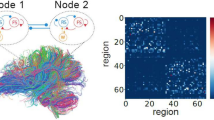Abstract
The influence of rhythmic, random, and associative intracellular electrostimulation under the conditions of a controllable experiment was investigated in individual identified and nonidentified neurons of the isolated central nervous system of the pond snail. Two phases distinguished by the markedness and stability of the observed adaptive changes of the initial spike activity, which were evaluated by means of various statistical tests, were discriminated during the adaptation of the neuron to the applied regimes of influences. In the first phase, which reflects the search for a strategy of optimization of the incoming external influences, an increase in a scatter of interimpulse intervals and in the disorderliness in the discharge pattern takes place. In the second phase, observed only in the case of associative influences, a true adaptation of the neuron develops, accompanied by stable changes in endogenous rhythmicity, which lead to the achievement of minimization or maximization of the associated stimulations. The changes accompanying the effective optimization of external influences are most marked at the end of the epoch of the corresponding associative stimulation, and are maintained or some time following its cessation. Possible endoneuronal mechanisms of the observed adaptive reorganizations of spike activity are discussed.
Similar content being viewed by others
References
P. M. Balaban and R. Chase, “The interrelationships of emotionally positive and negative areas of the brain of the common snail,”Zh. Vyssh. Nervn. Deyat.,40, No. 1, 125–134 (1990).
L. V. Bobrovnikov, “An investigation of cortical neurons by the method of microiontophoresis, controlled by neuronal activity,”Zh. Vyssh. Nervn. Deyat.,36, No. 5, 975–977 (1986).
Ya. I. Verbnyy, “Plastic changes in the spontaneous activity of neurons of the pond snail during rhythmic and associated intracellular electrostimulation,”Zh. Vyssh. Nervn. Deyat.,36, No. 6, 1108–1115 (1986).
Ya. I. Verbnyy, “The formation of a cellular analog of an instrumental reflex in identified neurons of the great pond snail during intracellular automatic electrostimulation,”Zh. Vyssh. Nervn. Deyat.,37, No. 5, 989–991 (1987).
Ya. I. Verbnyy and A. Ya. Mogilevskii, “A study of a cellular analog of “instrumental behavior” in individual neurons of a mollusc during intracellular automatic electrostimulation,”Zh. Vyssh. Nervn. Deyat.,38, No. 3, 489–496 (1988).
Ya. I. Verbnyy and A. Ya. Mogilevskii, “Possible mechanisms of the plastic reorganizations of the activity of the neuron with various regimes of intracellular electrostimulation based on the data of the methods of systemic analysis,”Zh. Vyssh. Nervn. Deyat.,43, No. 1, 129–138 (1993).
V. M. Vinetskii, A. É. Kutovoi, and A. Ya. Mogilevskii, “A hard-ware-software complex based on the Élektronika NTs-80 microcomputer for conducting neurophysiological controllable experiments,”Zh. Vyssh. Nervn. Deyat.,40, No. 1, 194–196 (1990).
Kh. L. Gainutdinov and M. B. Shtark, “Ionic mechanisms of neuronal plasticity,”Usp. Sovrem. Biol.,102, No. 3, 392–406 (1986).
T. N. Grechenko, “The plasticity of the isolated command neuron,”Vopr. Kibernetiki, No. 109, 149–162 (1985).
T. N. Grechenko, “The formation of a conditioned response in the electroexcitable membrane of the isolated LPa2 neuron,”Zh. Vyssh. Nervn. Deyat.,39, No. 4, 777–779 (1989).
T. L. Dyakonova, “What and how does a neuron learn,”Zh. Vyssh. Nervn. Deyat.,48, No. 4, 311–324 (1987).
T. A. Zapara and A. S. Ratushnyak, “The modeling in isolated neurons of plastic reorganizations of functional activity,” in: Simple Nervous Systems: Materials of 2nd All-Union Conference, Kazan', October 4–6, 1988 [in Russian], Nauka, Leningrad (1988), pp. 120–123.
E. Kandel, The Cellular bases of Behavior [Russian translation], Mir, Moscow (1980).
The Mechanisms of Memory (Manual on Physiology), G. A. Vartanyan (resp. ed.) [in Russian], Nauka, Leningrad (1987).
E. N. Sokolov, The Neuronal Mechanisms of Memory and Learning [in Russian], Nauka, Moscow (1981).
D. M. Barnes, “Neural models yield data of learning,” Science,236, No. 4809, 1628–1629 (1987).
J. H. Byrne, “Cellular analysis of associative learning,” Physiol. Rev.,67, No. 2, 329–439 (1987).
T. J. Carew and C. L. Sahley, “Invertebrate learning and memory: from behavior to molecules,” Ann. Rev. Neurosci.,9, 435–487 (1986).
J. Farley and D. L. Alkon, “Cellular mechanisms of learning, memory and information storage,” Ann. Rev. Psychol.,36, 419–494 (1985).
C. D. Woody, “Understanding the cellular basis of memory and learning,” Ann. Rev. Psychol.,37, 433–493 (1986).
Author information
Authors and Affiliations
Additional information
Translated from Zhurnal Vysshei Nervnoi Deyatel'nosti imeni I. P. Pavlova, Vol. 43, No. 3, pp. 602–612, May–June, 1993.
Rights and permissions
About this article
Cite this article
Mogilevskii, A.Y., Verbnyi, Y.I. Influence of different intracellular electrostimulation regimes on the dynamics of the adaptational processes of neurons. Neurosci Behav Physiol 24, 386–393 (1994). https://doi.org/10.1007/BF02359789
Received:
Issue Date:
DOI: https://doi.org/10.1007/BF02359789




